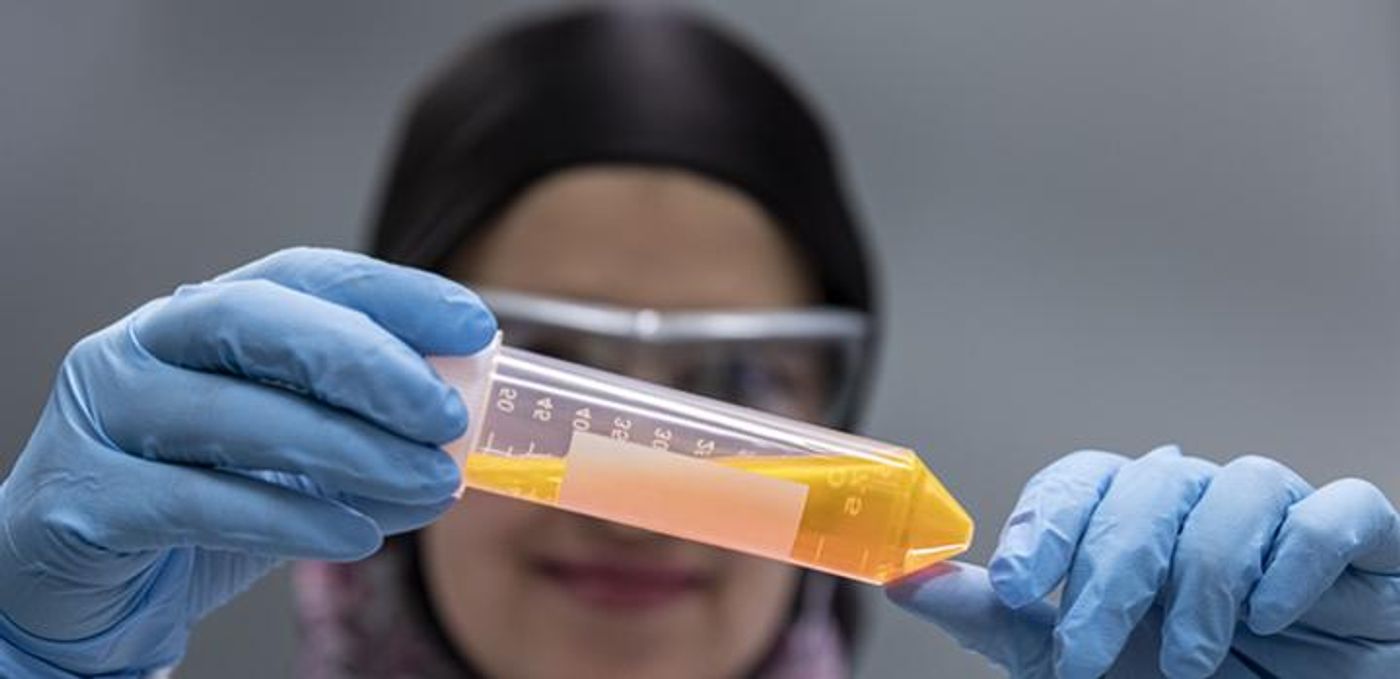Tools for Easily Analyzing DNA-Protein Interactions
A tool for visualizing the interactions between DNA and proteins called protein-induced fluorescence enhancement (PIFE) has been in use for several years. It uses a simple principle; when DNA is tagged with a fluorescent dye, it will glow more intensely when proteins are close by. It has enabled labs to observe DNA-protein interactions at the level of individual molecules and is easier to perform than techniques that require DNA and proteins to be labeled individually. A new study indicates that it has even greater potential.
Graduate students Fahad Rashid, Manal Zaher and Vlad-Stefan Raducanu in the lab of Samir Hamdan at King Abdullah University of Science & Technology (KAUST), have suggested that research laboratories can do more with the tool. The students saw that DNA bound to fluorescent dyes sometimes had a dimmer glow when proteins were nearby (as opposed to the intensified glow that was thought to result). The team decided to learn more about what was happening. “We set out to better define the conditions that lead to fluorescent booms or busts," said Rashid.
Reporting in Nature Communications, the scientists determined that the baseline fluorescence state of the dye-bound DNA determines whether an interaction with a protein will cause the glow to be brighter, or dimmer - what the team dubbed protein-induced fluorescence quenching (PIFQ). The events have roughly an equal chance of happening, making the difference an important factor in the interpretation of the observed fluorescence. The DNA sequence and the position of the dye were found to play a role in whether PIFE or PIFQ is the result of an interaction with protein. The team was able to use those factors to predict whether PIFE or PIFQ would occur.
"When insight into this initial state is gleaned from fluorescence and structural work, the anticipation of either effect becomes experimentally feasible," Raducanu explained.
"We turned every measurement into a game," Zaher said, "and we are happy to say that our hypothesis predicted the outcome more than 90 percent of the time!"
"By introducing PIFQ, we offer researchers in the field the possibility to address several biological questions where PIFE might not have been witnessed," added Raducanu.
"Taking into consideration the context-dependent nature of fluorescence modulation in the DNA-dye system opens the door to many possibilities in experimental design that could be tailored to researchers' needs," Zaher noted.
"We now anticipate that interpretation of data and attribution of molecular events from single-molecule data will become easier and more precise," Rashid concluded.
Sources: AAAS/Eurekalert! via KAUST, Nature Communications









